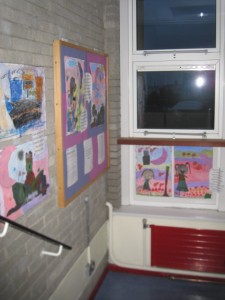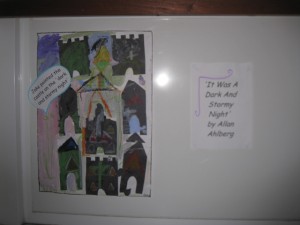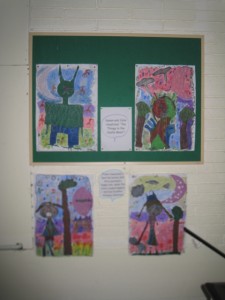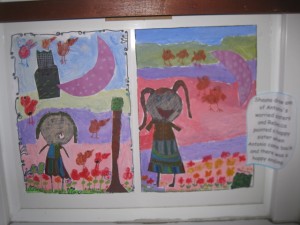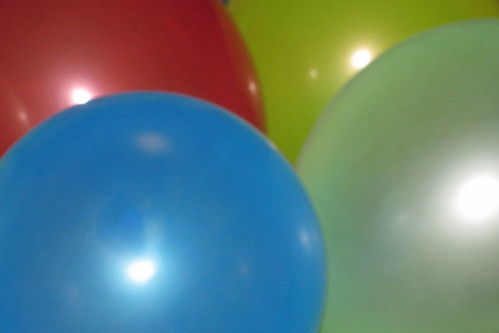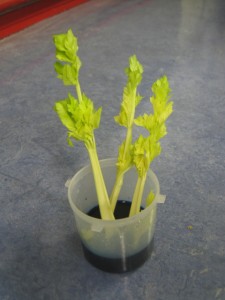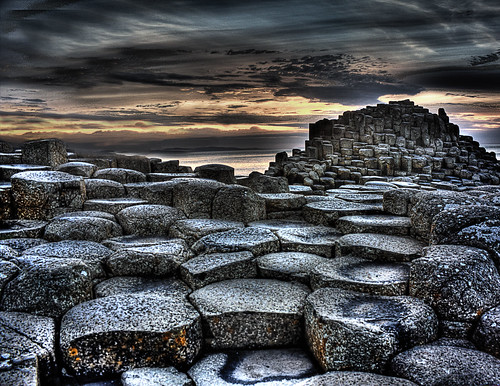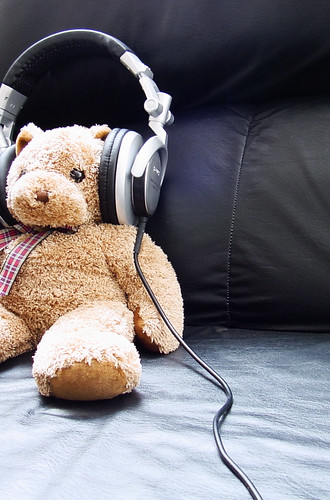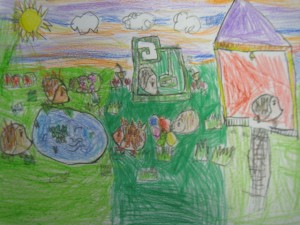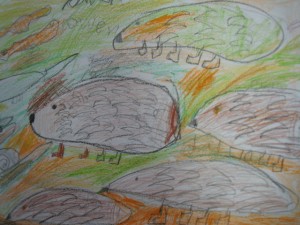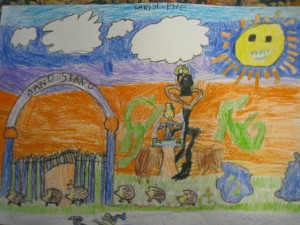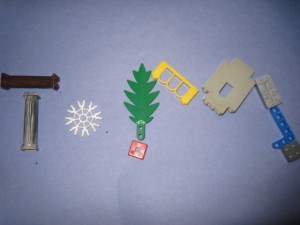
Dear Parents,
As the Parent Teacher Meetings draw to a close
I thought it would be useful to ‘recap’
on what was said at them.
At the PT Meetings you saw
our system of record keeping in the school.
We also looked at reports from other years.
We examined the recurring themes in those reports;
the positives,
and where we may need to focus with your child.
In many cases, this was in the area of
English comprehension
and tables and computation in Maths.
We looked at standardized test results from other years.
The test results we looked at were from last May,
a time when children would not have developed ‘exam skills’.
A test is just a ‘snap shot’ in time.
For more information on Standardized Tests
you might like to take a look at
Information about Standardized Tests from elsewhere on this blog
Looking at your child’s copybooks and workbooks
give a much better overview of how your child is progressing.
We compared the children ability as indicated
in those standardized tests
with the day to day work that they do in class.
Many parents spoke about the difficulty
of fitting in time for tables.
At the moment we are also learning how to take away using
the ‘decomposition’ or ‘renaming’ or ‘regrouping’ method.
In class I note that children think
that they are not getting the sums right
because they aren’t ‘renaming’ correctly,
but more often than not it is that
they have made a mistake when they take away.
So we will continue working them.
You may find the following useful from
The Importance of Learning Tables (from this blog)
Ways of learning
In 1st and 2nd Class we practise tables,
in a concrete way, using lollipop sticks and unifix cubes.
We also use the table book.
In school we use Joyce O’Hara’s
Addition and Subtraction CD
from Ashton Productions
ADDITION AND SUBTRACTION CD
In class we say ‘one and zero make one’,
one and one make two’…
‘one from six leaves five’.
In this way we use the same language as this cd.
Children learn in different ways.
Many respond to working with concrete objects;
lollipop sticks,
cubes,
smarties.
Some children learn best by singing or chanting the table.
For some, keeping track of their tables on their fingers
(a kinaesthetic approach) helps.
Strategies to help your child with addition
At some meetings I spoke about strategies we teach children
to help them when they are adding up.
I said I would follow up with more details.
In class I say to the children:
1. Start with the larger number.
It is easier to add 11 and 2 rather than tot up 2 and 11.
2. When adding nine, add 10 and
take away one or to remember the pattern:
Adding 9 to a number the number in the unit place
is always one less.
When adding nine, add ten and then take away one.
3. If you are totting up three numbers,
spot can you make ten with two of the numbers
and then add the other.
4. If you know your ‘Table of Doubles’
and that 7 and 7 are 14,
then it is easier to work out ‘near doubles plus one’ 7 and 8,
near doubles take away one 7 and 6
or near doubles plus two 7 and 9
near doubles minus two 7 and 5.
The children have been revising the ‘Table of Doubles’
for homework this week.
This is so that they can use ‘near doubles’ to add up quickly.
You might find this more detailed link useful:
Strategies for Learning Tables
This may seem a lot and a bit confusing,
but each time we work through a page of sums
I remind the children of these strategies.
The other ‘hiccup’ in computation,
occurs when children are required to ‘take away’
across the 10.
Ask a child to take 7 from 10 and
they will say 3 with confidence.
This is because they are very sure of ‘what makes 10’.
However when one asks a child a sum like 17 take away 9,
they are less sure of the answer.
One of the solutions is for the child to learn
the ‘make up’ of 20 and be as sure of it as they are of 10.
The other solution is that the child learns to ‘bridge the 10’.
Take that sum 17-9 again:
The children are fairly secure in the knowledge
that 7 steps will bring them back to 10
‘Nine is one less than ten. So you add 7 and 1
and the answer is eight’.
Another question parents asked was
How do I help my child with comprehension?
When you read with your child check that they understand
what they are reading by asking them questions.
I have noticed that when children aren’t
observing the punctuation
on a page they lose the meaning of what they are reading.
Sometimes, in the early days when children are doing
comprehension exercises in school,
they attempt to answer the questions
without reading the piece!
To start with, the children are asked
1. to read the piece of comprehension.
2. To read the questions underlining
what they are being asked.
This means they will be reading the piece
with the questions in mind.
They will be reading with a purpose.
3. To read the piece again with the questions in mind…
underlining what they think would be useful.
4. Then to go through the questions one by one,
looking for the answers in the comprehension piece
and writing down the answers.
As they get good at this, there is less need for underlining.
You might like to TRY THIS WEBSITE FOR GRADED COMPREHENSION EXERCISES
You could even do them orally. Try the Second Grade Ones.
When these are complete have a go at
some of the Third Grade ones.
PLEASE CLICK FOR AN EVEN MORE COMPREHENSIVE SITE ON STRATEGIES FOR COMPREHENSION
Question words like ‘Who?’ ‘Where?’ ‘When?’ ‘How?’ and ‘Why?’ may help.
I found the Parent Teacher meetings very helpful.
I feel I know your child much better now.
I am very grateful for your continued co-operation
and support.

An edited version of this letter
will be going home on paper shortly.

